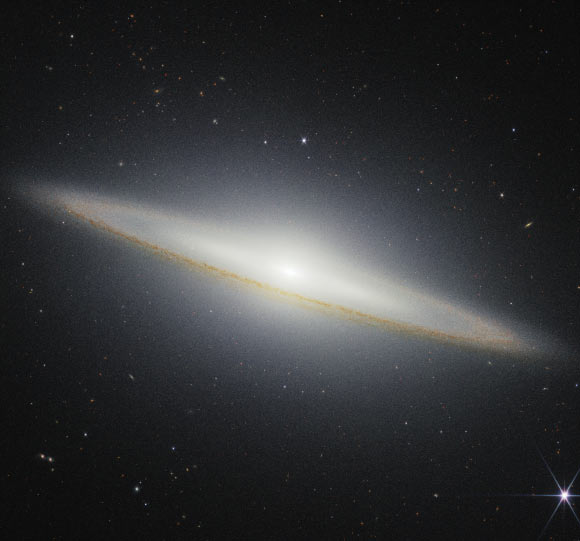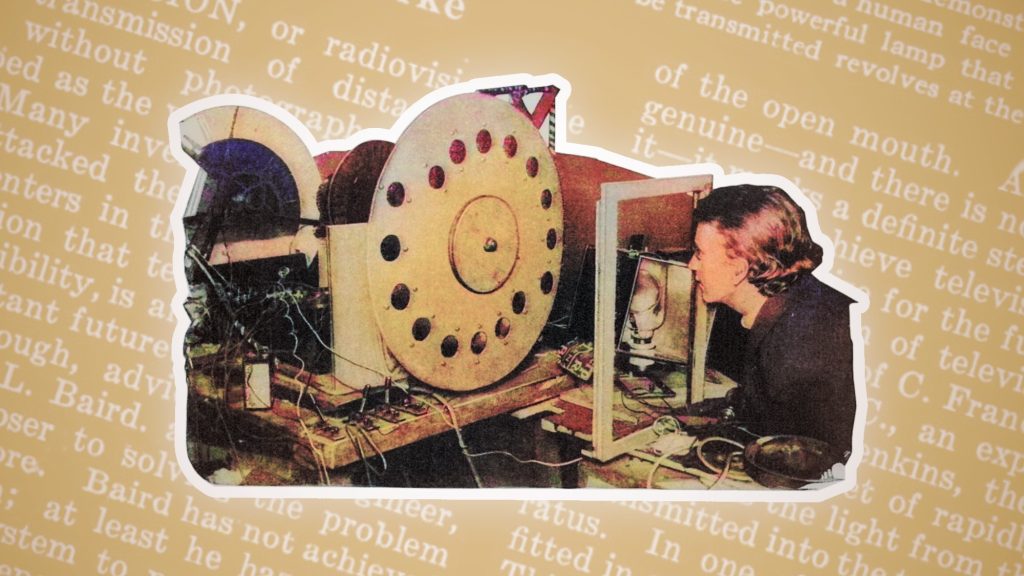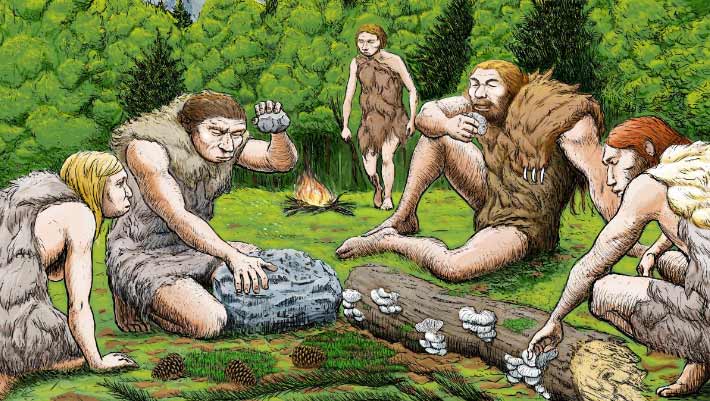Using the NIRCam (Near-Infrared Camera) instrument aboard the NASA/ESA/CSA James Webb Space Telescope, astronomers have captured a new image of the Sombrero galaxy.
In the new Webb/NIRCam image, the Sombrero galaxy’s huge bulge, the tightly packed group of stars at the galaxy’s center, is illuminated, while the dust in the outer edges of the disk blocks some stellar light. Image credit: NASA / ESA / CSA / STScI.
The Sombrero galaxy is located approximately 28 million light-years away in the constellation of Virgo.
Also known as Messier 104, M104 or NGC 4594, this galaxy was discovered by the French astronomer Pierre Méchain on May 11, 1781.
It has a diameter of 49,000 light-years — about two times smaller than our Milky Way Galaxy.
The Sombrero galaxy shows characteristics of both of the dominant types of galaxies in the Universe, the spirals and the ellipticals.
It has spiral arms and a very large bright central bulge, which makes it look like a hybrid of the two types.
We see the Sombrero galaxy edge-on, at an angle of 6 degrees south of its plane. Its dark dust lane dominates the view.
“Studying galaxies like the Sombrero at different wavelengths, including the near-infrared and mid-infrared with Webb, as well as the visible with the NASA/ESA Hubble Space Telescope, helps us understand how this complex system of stars, dust, and gas formed and evolved, along with the interplay of that material,” the Webb astronomers said in a statement.
“When compared to Hubble’s visible light image, the dust disk doesn’t look as pronounced in the new near-infrared image from NIRCam.”
“That’s because the longer, redder wavelengths of infrared light emitted by stars slip past dust more easily, so less of that stellar light is blocked.”
“In the mid-infrared image, we actually see that dust glow.”
“Studies have indicated that hiding behind the galaxy’s smooth dust lane and calming glow is a turbulent past,” the astronomers said.
“A few oddities discovered over the years have hinted this galaxy was once part of a violent merger with at least one other galaxy.”
“The Sombrero is home to roughly 2,000 globular clusters, or collections of hundreds of thousands of old stars held together by gravity.”
“Spectroscopic studies have shown the stars within these globular clusters are unexpectedly different from one another.”
“Stars that form around the same time from the same material should have similar chemical ‘fingerprints’ — for example, the same amounts of elements like oxygen or neon.”
“However, this galaxy’s globular clusters show noticeable variation.”
“A merger of different galaxies over billions of years would explain this difference.”
“Another piece of evidence supporting this merger theory is the warped appearance of the galaxy’s inner disk.”
“While our view is classified as edge on, we’re actually seeing this nearly edge on,” they added.
“Our view six degrees off the galaxy’s equator means we don’t see it directly from the side, but a little bit from above.”
“From this view, the inner disk appears tilted inward, like the beginning of a funnel, instead of flat.”
“The powerful resolution of Webb’s NIRCam also allows us to resolve individual stars outside of, but not necessarily at the same distance as, the galaxy, some of which appear red.”
“These are called red giants, which are cooler stars, but their large surface area causes them to glow brightly in this image.”
“These red giants also are detected in the mid-infrared, while the smaller, bluer stars in the near-infrared disappear in the longer wavelengths.”
“Also in the NIRCam image, galaxies of diverse shapes and colors are scattered throughout the backdrop of space.”
“The variety of their colors provides astronomers with clues about their characteristics, such as their distance from Earth.”

























